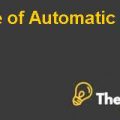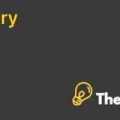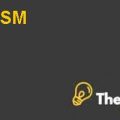Campain du froid Case Case Solution
Introduction
The principal point of this case lies in the valuation of the three regions within Compagnie du Froid, S.A., a corporation functioning in the ice cream business, during the year 2009. Primarily, the corporation comprised a decentralized approach, allocating uniform bonuses to regional managers, irrespective of individual performance. However, due to an overall decline in performance and stockholder pressure, Mr. Jacques Trumen decided to reexamine and hypothetically modify this approach. Initially, adopting innovation through decentralization was observed as beneficial. Encouraging regional autonomy could lead to creative extension plans.
Uniform distribution of bonuses aimed at promoting fairness (Simons, 2017 (Revised)). This system sought to motivate all managers equally, irrespective of regional challenges. Reconsidering performance supports the corporation's mission, warranting regional goals match the overall objectives (Marisi, 1994). Offers insights into management efficiency in meeting projected profit plans. Preparing a flexible budget that considers seasonal variations aids in accurate performance assessment. Factors like product sales, labor efficiency, raw materials cost, and market share are considered for a general performance evaluation.
Problem Statement
Mr. Jacques faced a challenge linked to the average level of performance of the corporation's three separate regions. Both stockholders and the top management exercised pressure on Mr. Jacques to articulate a bonus plan centered on the individual performance of each business section, conflicting with the conservative fixed 2% approach irrespective of their performance.
Situation Analysis
From the exhibit 05 of case we done the following data analysis seems to be a breakdown of the costs and factors considered in determining the transfer price for a volume of 603,000 liters of ice cream.
Volume transferred is 603,000 liters of ice cream.
Actual Costs (in Euros)
Dairy Ingredients
The cost per liter is 1.98 euros, resulting in a total cost of 1,194 euros.
Other Ingredients
The cost per liter is 0.69 euros, resulting in a total cost of 416 euros.
Labor
The cost per liter is 0.09 euros, resulting in a total cost of 57 euros.
Allocated Fixed Costs (in Euros)
Other Costs
Allocated at 0.46 euros per liter, totaling 279 euros.
Depreciation
Allocated at 0.09 euros per liter, totaling 56 euros.
S&A expenses (Selling and Administrative expenses)
Allocated at 0.04 euros per liter, totaling 23 euros.
5% profit margin
A profit margin of 0.17 euros per liter, totaling 101 euros.
Total transfer price
The sum of all the costs and profit margin, resulting in a transfer price of 3.53 euros per liter and a total of 2,126 euros for the 603,000 liters.
Transfer Pricing Interpretation
Transfer pricing is the setting of the price for goods and services sold between related entities within an enterprise. In this case, it appears to be the transfer price set for the ice cream when it is transferred from one part of the business to another. The transfer price of 3.53 euros per liter is determined by considering both variable costs (actual costs) and fixed costs, along with a profit margin.
This pricing approach aims to ensure that the selling division is compensated adequately for its costs and that the purchasing division pays a fair price, which includes a reasonable profit margin for the selling division. It also helps in assessing the performance of each division independently. The allocation of fixed costs ensures that all relevant costs are considered in determining the transfer price.
- The "Actual Costs" include the direct costs associated with producing the ice cream, such as ingredients and labor.
- The "Allocated Fixed Costs" include additional costs that are not directly tied to the volume produced but are allocated based on some predetermined criteria.
- The "5% profit margin" is a markup added to cover the company's profit.
Pros and Cons of Transfer Pricing Options
Cost Allocation and Visibility
Transfer pricing allows for a transparent allocation of costs among different business segments or subsidiaries within a multinational corporation. This enhances visibility into the financial performance of each unit. This transparency aids in accurately assessing the contribution of each segment to the overall value chain.
Tax Optimization
Companies strategically employ transfer pricing to optimize their tax liabilities. By judiciously assigning profits and costs based on varying tax rates in different jurisdictions, organizations can achieve tax efficiency. Tax optimization contributes to improved financial planning and resource utilization (Oguttu, 2020).
Resource Optimization and Operational Efficiency
Transfer pricing enables companies to optimize the allocation of resources by determining the most cost-effective way to source goods and services internally. This optimization contributes to operational efficiency, ensuring that resources are allocated where they generate the maximum value..........
Campain du froid Case Case Solution
order on the website to order your own originally done case solution."}" data-sheets-userformat="{"2":513,"3":{"1":0},"12":0}">This is just a sample partial case solution. Please place the order on the website to order your own originally done case solution.







